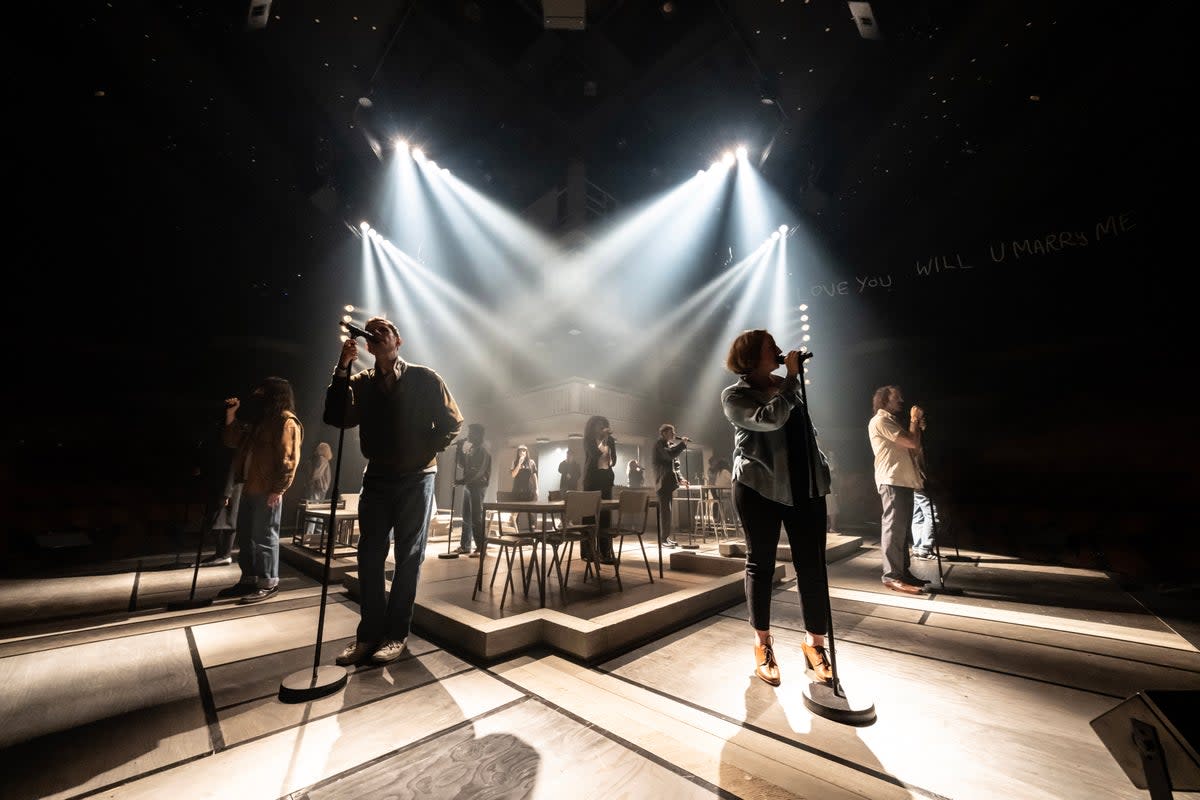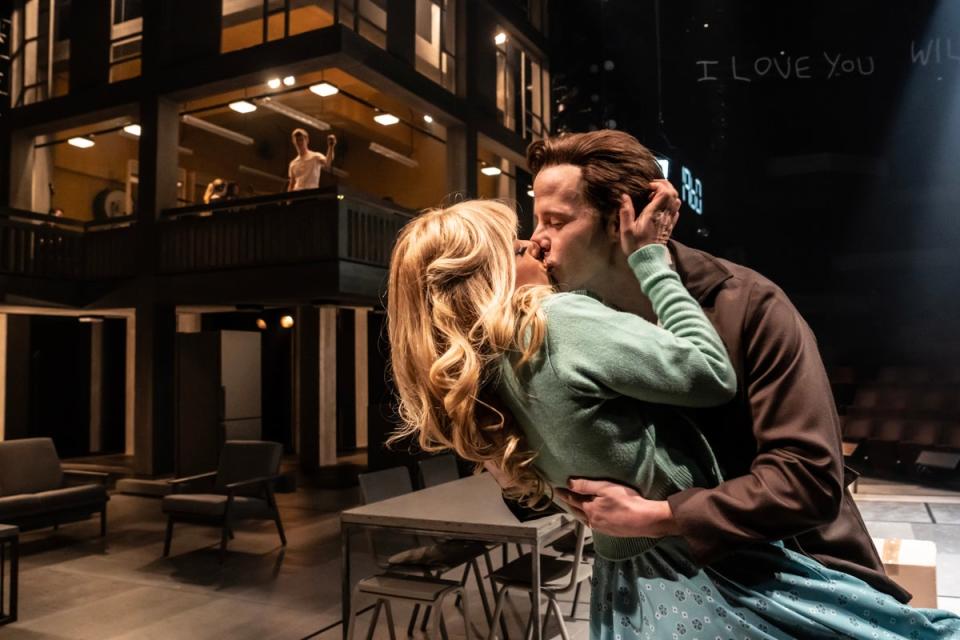Standing at the Sky’s Edge at the National Theatre review: a stirring musical reinforced with Sheffield steel

Who’d have guessed a musical about Sheffield’s brutalist Park Hill housing estate could be so uplifting? Playwright Chris Bush has worked the stirring earworms of her fellow native, the much-feted singer-songwriter Richard Hawley, into a beguiling triple narrative covering the development’s utopian postwar conception, its demise in the Eighties and its 21st century yuppie rebirth.
As well as a moving human story, this is an interaction between modernist concrete buildings: Park Hill, the National, and the Crucible, where Sheffield Theatres’ artistic director Robert Hastie first mounted the show in 2019. Even after its journey down to London, it’s still defiantly wedded to Sheffield, with jokes about the city’s two football teams and the inhabitants’ hatred of Leeds. Although the detail is local, the message about community, pride and the double-edged sword of gentrification is universal.
Even though Sheffield runs like arterial blood through Hawley’s output not all the songs deployed here suit their theatrical repurposing. Both individual and interconnected elements of the three storylines are a bit too neat. But this remains a huge achievement by Hastie and Bush, one of our most prolific and arresting writers: a bold step forward for musical theatre, that brings northern, working-class steel to the South Bank.
In 1960, we see sparky Rose and her affectionate but chauvinistic foreman husband Harry move gratefully from slum housing into these bright, airy “streets in the sky”. Almost three decades later, their son Jimmy clicks with Liberian refugee Joy in the now-scuzzy estate. Cut to 2015, and London professional Poppy is buying a flat in the now-refurbished, fashionable and futuristically telegenic block to escape her ex-fiancée Nikki. “Polish some concrete, gerrit on Doctor Who, and people think it’s nirvana,” as eye-rolling estate agent Connie puts it.

All three core stories are about love and aspiration, thwarted by internal tensions or external forces. There’s anger here about the Thatcherite destruction of northern industry but also ambivalence about Cool Britannia-style urban regenerations that involve social cleansing. Northern working-class culture is both celebrated and critiqued, especially when it comes to traditional gender roles. Lynne Page’s joyful choreography takes inspiration from the dancehall.
The title track and the first-act closer There’s a Storm A-Comin’ roll over you like a powerful wave, and For Your Lover Give Some Time is wrenchingly beautiful. As Nikki, Maimuna Memon unleashes her reliably mighty pipes on Open Up Your Door.
But one of the pleasing things about the show is that anyone can helm a song, and strong voices pop out all over: from Rachael Wooding’s spirited Rose and Robert Lonsdale’s subtly weak Harry; Faith Omole’s Joy and Bobbie Little’s Connie – who is underused both as a linking figure between the eras and as an occasional commentator and narrator.
This is a democratic, demotic work where the cast and Ben Stones’ set – complete with Park Hill’s famous neon sign replicating the original graffiti scrawl “I love you will U marry me” – seem to be in direct conversation with the audience and the auditorium. Smashing.
National Theatre, to 25 March, nationaltheatre.org.uk


